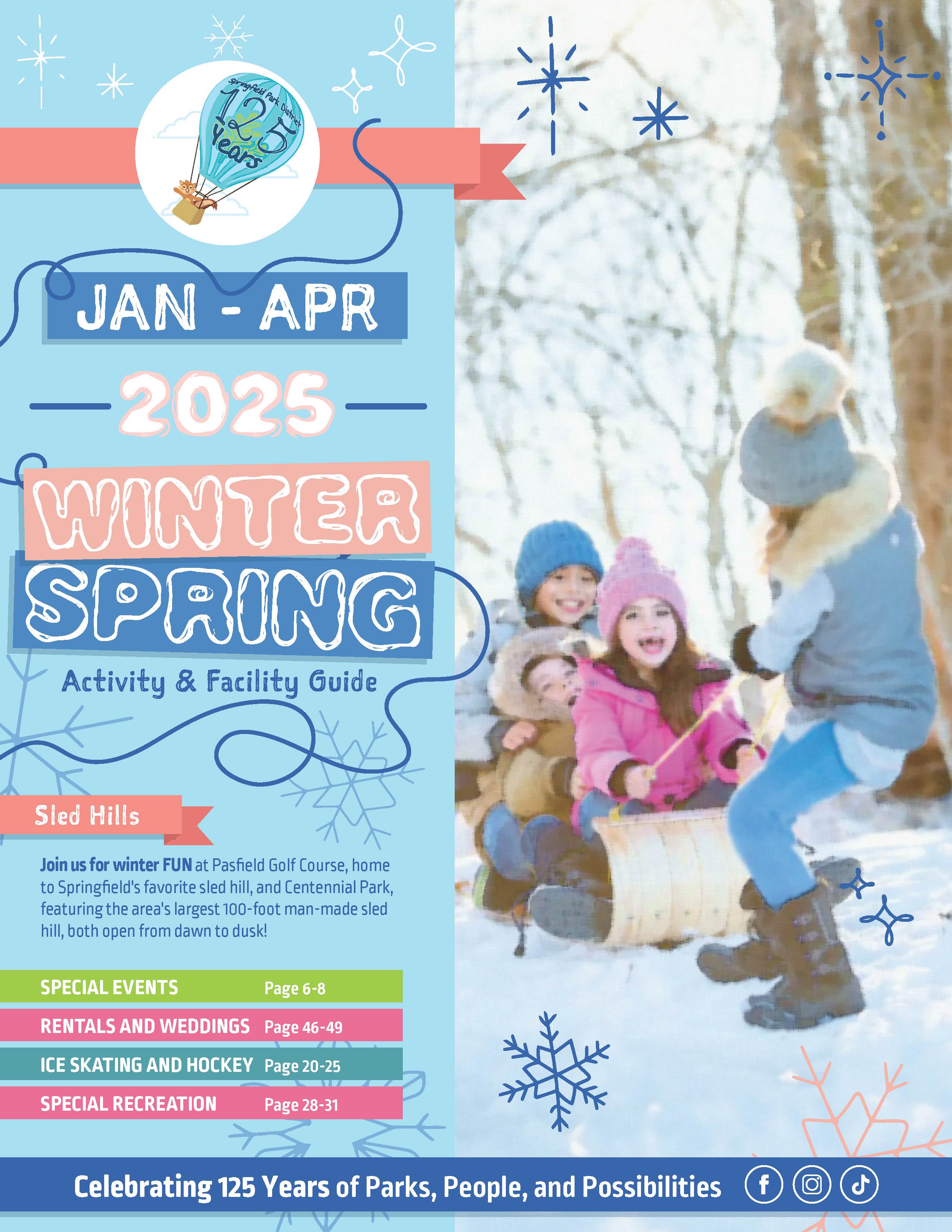Explore More

Browse Activity Guide
Page through the sections of the full guide and take advantage of the click thru links to sign up for your favorite programs!
View Full Guide
Events
News
Natural Resource Conservation & Wildlife Preservation Efforts
The Springfield Park District property is maintained in a natural state. Woods, prairies, wetlands, and grasslands offer district residents opportunities to view wildlife and reflect on nature right in our community.
Recycling
The Springfield Park District recycles over 20 tons of paper, plastic, cardboard, aluminum, & glass every year.
Nature Preserve
There are over 322 acres of nature preserve within the Springfield Park District.
Sangamon Bottoms Land & Water Reserve
The Springfield Park District maintains over 113 acres of property at Riverside Park. This has been surveyed and signage is up and clearly visible around the entire border.
Pollinator Gardens
A number of invasive trees and shrubs have been removed district-wide and replaced with native species. Pollinator gardens have been established in six of our parks with the help of numerous volunteers.
Franklin's Ground Squirrel
The Springfield Park District continues to manage the habitat restoration project at Centennial Park to protect the endangered Franklin's Ground Squirrel.
LEARN MORe
Prescribed Burns
Why Burn?
Burning is a natural process that is beneficial to many ecosystems. Research shows that before settlement, native landscapes were shaped by and evolved with the presence of fire. Fires were frequent across prairies, wetlands, and woodlands - often caused by lightning or intentionally set by Native Americans who used fire to facilitate travel, hunting, and stimulate new growth for game.
Today, due to dense population areas, fires are put out before they spread. These actions disrupt a natural process. Conducting prescribed burns in a planned and controlled manner helps reintroduce a natural process.
Benefits of Burning
Prescribed burn management is an efficient and economical tool that reduces the number of pesticides that otherwise may be needed to control invasive plants. Fire helps to promote species diversity by controlling invasive woody shrubs and trees. Without fire, natural areas often become thickets of shrubs or weeds with little diversity. Fire burns off dead vegetation and stimulates new plant growth by allowing sunlight to warm the dark soil.
Prescribed burn management is an efficient and economical tool that reduces the number of pesticides that otherwise may be needed to control invasive plants. Fire helps to promote species diversity by controlling invasive woody shrubs and trees. Without fire, natural areas often become thickets of shrubs or weeds with little diversity.
Fire burns off dead vegetation and stimulates new plant growth by allowing sunlight to warn the dark soil, encouraging germination. Fire also enriches the soil by returning nutrients back to the soil.
Who is involved?
Fully trained professional burn crews prepare burn prescription plans. They prepare maps showing areas targeted for burns, ignition patterns, and the location of firebreaks. A firebreak is anything that will stop a fire and contain it in a controlled area such as a road, mowed path, or a burned strip of land. The crews specify ideal weather conditions, number of staff and type of equipment needed. They also specify the ecological goals of the burn. On the day of the burn, the crews carry cell phones and two-way radios. A water truck is also present the day of the burn.
How are sites chosen?
The Springfield Park District Superintendent of Natural Resources carefully assesses and determines which areas need to be burned. The Park District then notifies the fire & police departments in advance of the burn. In the case of prescribed burns adjacent to residential property, notifications are sent to individual property owners, neighborhood groups, and city officials.
Are burns safe?
Fire does not harm prairie plants because their root system extends far into the ground - often more than twice the length of their foliage above ground. Most prairie grasses have buds that are located beneath the soil surface. Some trees such as oaks and hickories grow a thick bark that protects them from fire. Animals stay safe by retreating to burrows, flying away, or simply moving to another area, returning later. Burns are also scheduled to occur before spring nesting occurs.
When do burns occur?
Burns are conducted in the early spring and late fall. To ensure safety and to minimize smoke blowing, trained crews carefully time the burn for a specific range of temperature, wind direction, wind strength, humidity, barometric pressure, and ground moisture conditions. The exact date and time is subject to change depending on whether or not optimal conditions for a safe yet effective burn are available.
How will the area look after the burn?
A site burned in the spring will green up very quickly. Sites burned in the fall may appear black throughout the winter. In the season falling a prescribed burn, the vegetation is lusher, the flowers are more radiant, and the seed production is more plentiful.
